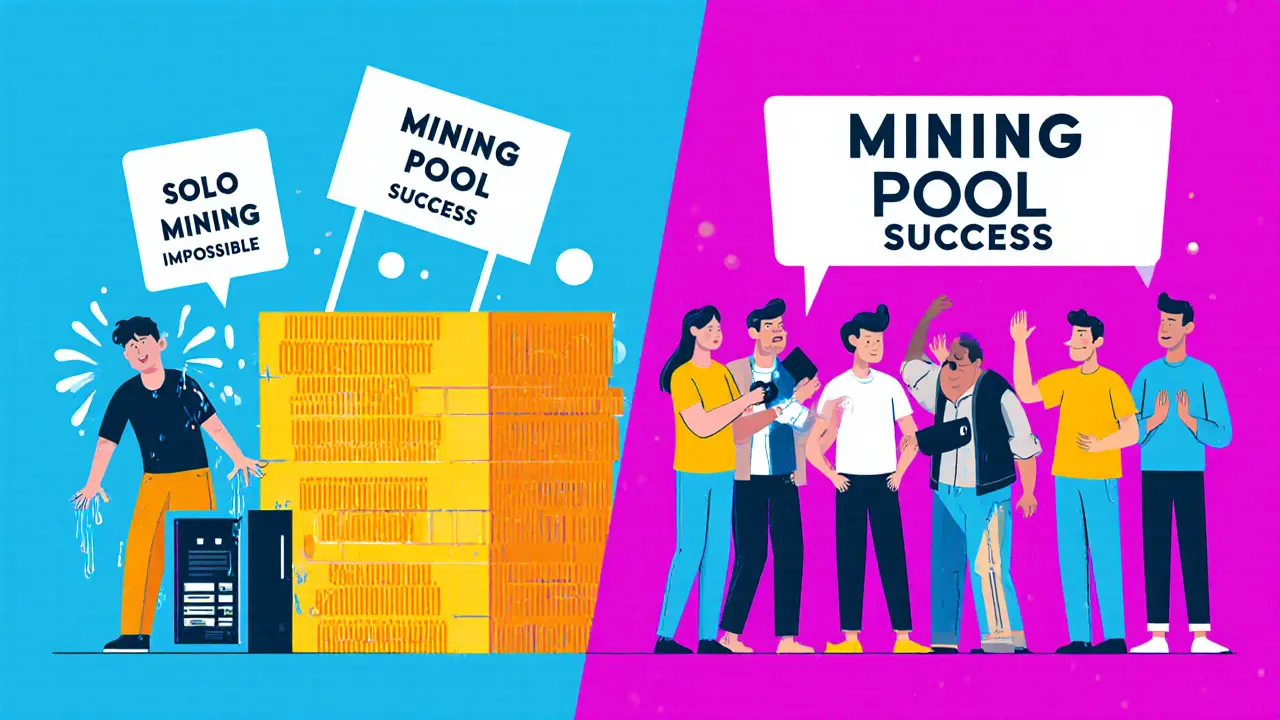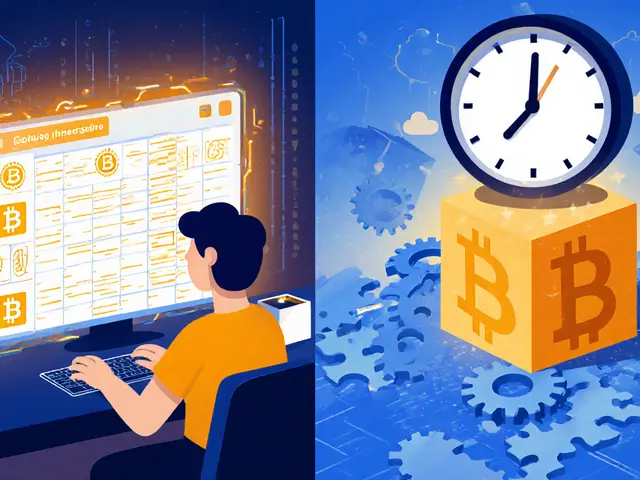Mining Pool: How It Works and Why It Matters
When you hear Mining Pool, a group of miners that combine their computing power to increase the chance of solving a block and sharing the reward. Also known as pool mining, it lets individual participants earn steadier payouts than they would mining solo.
The core of any mining pool is Proof of Work, the consensus algorithm that requires miners to solve cryptographic puzzles to add a block. Hashrate, the total number of hashes a pool can compute per second directly determines how quickly the pool finds a solution. Higher mining pool hashrate means more frequent block discoveries, which translates to smaller but more regular payouts for each member. However, the pool’s Pool Fees, the percentage taken by the pool operator for maintenance, server costs and development cut into those payouts, so miners must balance fee size against service quality. Finally, the Pool Operator, the entity that runs the pool’s infrastructure and distributes rewards shapes trust, payout transparency, and the overall user experience.
Key Factors When Choosing a Mining Pool
First, look at the pool’s payout scheme. PPS (Pay‑Per‑Share) guarantees a fixed reward per share, while PPLNS (Pay‑Per‑Last‑N‑Shares) rewards miners based on the pool’s recent luck, which can be higher but more volatile. Second, examine the pool’s geographic location. A server close to your mining rig reduces latency, improving the odds of submitting a valid share before the network updates. Third, check the pool’s reputation. Community forums often flag operators with delayed payouts or hidden fees. Fourth, consider the minimum payout threshold; a lower limit gets you cash faster, but some pools raise it to reduce transaction costs. Finally, evaluate the pool’s added services—some offer merged mining, built‑in monitoring dashboards, or automatic switch‑over to more profitable chains.
Current trends show a surge in regional mining pools. In India, new regulations push miners toward smaller, locally hosted pools to stay compliant with tax rules, while in Pakistan, large pools are forming to pool the country’s growing hash power. These shifts affect everything from fee structures to payout latency. Additionally, the rise of renewable‑energy‑backed pools is changing the cost‑benefit equation; lower electricity bills can offset higher fees, making them attractive for eco‑conscious miners. Keep an eye on how recent legal updates—like India’s crypto‑mining taxation and the EU’s AML guidance—might impact pool registration and reporting requirements.
Understanding the interplay between mining pool mechanics, hash rate, fees, and operator trust gives you a solid foundation for making informed decisions. Below you’ll find in‑depth articles that walk through CBDC impacts, crypto‑backed stablecoins, DeFi lending models, and even country‑specific mining regulations—all of which tie back to how pool dynamics shape the broader crypto ecosystem. Dive into the collection to see practical examples, step‑by‑step guides, and expert analyses that will help you pick the right pool and boost your mining profitability.







